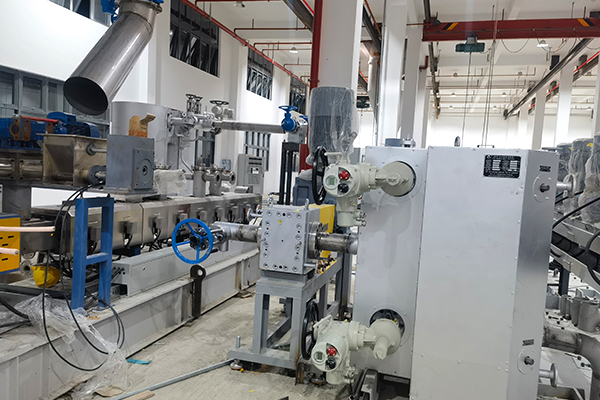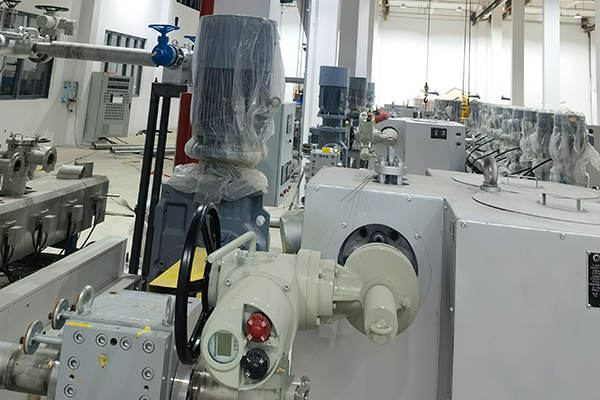
A pipeline melt pump is a specialized device designed for the conveyance, pressurization, and metering of high-temperature, high-viscosity polymer melts, playing a critical role in industries such as plastics, rubber, and chemical fibers. Below is a detailed introduction covering its working principle, structural features, application advantages, technical parameters, and selection recommendations:
I. Working Principle
The pipeline melt pump is a positive displacement pump that conveys melt through the rotation of a pair of intermeshing gears. The specific process is as follows:
Feeding Stage: The melt enters the pump cavity through the inlet port, filling the tooth spaces of the driving and driven gears.
Conveying Stage: As the gears rotate, the melt is carried to the opposite side of the pump cavity, forming a sealed working volume.
Discharge Stage: With continued rotation of the gears, the melt is extruded from the pump cavity and delivered to downstream equipment (such as an extrusion die or pipeline) through the outlet port. Due to the meshing action of the gears, the pump's flow rate is directly proportional to its rotational speed, and the outlet pressure remains stable, unaffected by fluctuations in inlet pressure or melt viscosity.

II. Structural Features
High-Precision Gears: Manufactured from high-strength, wear-resistant alloy steel or nitrided steel, with precisely machined gear clearances to ensure stable and accurate melt conveyance.
High-Temperature Materials: Key components such as the pump body, gears, and bearings are made from high-temperature tool steel, stainless steel, or chrome-nickel alloy steel, capable of withstanding operating temperatures up to 400°C.
Sealing Design: Typically employs packing seals, spiral seals, or a combination thereof to effectively prevent melt leakage and ensure long-term, stable operation of the equipment.
Heating System: Equipped with either electric heating or heat transfer oil heating devices to maintain the appropriate temperature of the melt within the pump, preventing solidification or viscosity changes.
Linear Flow Channel Design: Optimized inlet and outlet flow channels reduce the residence time of the melt within the pump, minimizing shear heating and improving plastication effects.

III. Technical Parameters
The main technical parameters of the pipeline melt pump include:
Displacement Range: 0.1 cc/r ~ 12000 cc/r (displacement per revolution).
Output Pressure: 0 ~ 40 MPa.
Suction Pressure: Vacuum (-0.05 ~ -0.08 MPa) ~ 30 MPa.
Operating Temperature: ≤400°C.
Viscosity of Conveyed Medium: 1 ~ 4000 Pa·s (1000 ~ 4,000,000 cP).
Heating Method: Electric heating or heat transfer oil heating.
Driving Method: Motor + reducer + universal coupling at the pump end.
Flow Adjustment: Variable frequency speed control.
Control System: Pressure closed-loop control (intelligent instrument + inverter or servo driver, PLC + inverter or servo driver).

IV. Application Fields
The pipeline melt pump is widely used in the following fields:
Plastics Processing: Extrusion molding of sheets, plates, pipes, films, profiles, etc.
Rubber Industry: Extrusion and conveyance of rubber and elastomer melts.
Chemical Fiber Industry: Conveyance and metering of chemical fiber raw materials such as polyester and nylon.
Pipeline Conveyance: Smooth pressurized conveyance of high-viscosity media in polymer fluids.
Compounding Extrusion: Used in series with single-screw or twin-screw extruders to improve compounding quality and output.
Email: sale@meltpump.com
WhatsApp: +86 158 38331071